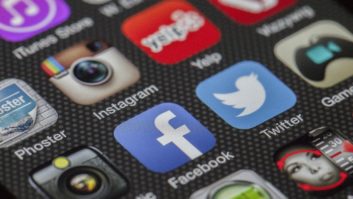The author is membership program director of the National Federation of Community Broadcasters. NFCB commentaries are featured regularly at www.radioworld.com.
With 2020 ending, many people in noncommercial radio are looking at the defining moments of the year. And though the big stories of the nation had a lot of resonance, one topic in particular towered over the community and public media industries.
COVID-19 had a stunning impact, including upon stations forced to change core operations and to lay off staff amid financial problems. The presidential election spawned an array of community discussions, such as escalating polarization and the complex issues opened up by misinformation. 2021 is likely to see both of these subjects dominating headlines and our popular consciousness.
[Read: Community Broadcaster: Difference Makers]
However, if you are a watcher of community media or public radio, nothing quite shaped the industry like diversity, equity and inclusion.
DEI was front and center in no small part due to the proverbial dam breaking in community and public media. Scandals had been brewing at prominent organizations since at least 2017. But where leaders once beset by controversy angled out of positions largely on their own terms, 2020 was the year jobs were withdrawn, people were fired, organizations committed to do better, and everyone ignoring problematic cultures was officially put on notice.

This year, noncommercial media outlets of many sizes saw their names tied to claims of racism, exclusion and abusive workplaces. St. Louis Public Radio and WAMU drew national headlines for serious internal issues. Social media and the internet became forums for workers at Georgia Public Broadcasting, GBH, PRX and elsewhere to speak out. Where staff may have once been quiet, this was the year they instead called for accountability at places like WNET in New York and NPR. Past issues sunk the jobs of Sonya Forte Duhé and Andi McDaniel; they had new positions at Arizona State University’s well-regarded journalism program and Chicago Public Media, respectively. Elsewhere, 2020 saw a wave of retirements and resignations by those caught up in staff conflicts, the most visible of which was American Public Media Group CEO Jon McTaggart. Even community radio saw the spotlight, with sexual misconduct and other issues being raised.
It was not all bad news. The killing of George Floyd and nationwide racial justice demonstrations pushed many communities to have dialogs about bias and equality. Seattle’s KEXP announced it was changing its DJ lineup in a bid to more accurately represent its diverse city. In July, Colorado Public Media offered a sober look at its own failings, pledging to do better. And in the fall, Public Media for All organized a day of action that mobilized dozens of major public media organizations and hundreds of employees to commit to improvements related to diversity, equity and inclusion.
How diversity initiatives will be executed in 2021 remains to be seen, though signs are good that such topics will continue to be a high priority. In December, the Corporation for Public Broadcasting hosted a discussion on diversity with managers across the industry. Organizations like Greater Public, NFCB and the Station Resource Group are leading conversations with their cohorts. And outlets such as Capital Public Radio, KALW and Blue Ridge Public Radio have agreed to accomplish at least one Public Media for All goal in their first 30 days of signing up.
2020 has been a most difficult year for radio. Yet, new calls for inclusion may make 2021 a year we step up to be more relevant, diverse and engaged.







